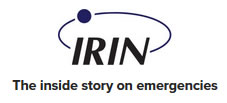
Tuesday, February 5, 2013

Photo: Otto Bakano/IRIN
NAIROBI, 5 February 2013 (IRIN) - With security improved following the retreat of Al-Shabab insurgents from urban areas of south and central Somalia, aid agencies have increased health services and expanded emergency healthcare, reaching previously inaccessible areas.
“Somalia has experienced a relatively increased humanitarian space, and this has helped aid agencies to increasingly [provide] health services to the population who were earlier inaccessible,” Omar Saleh, UN World Health Organization (WHO) emergency coordinator for Somalia, told IRIN.
Epidemiological surveillance, too, has increased. “This has helped in detecting and dealing with possible disease outbreaks and putting adequate measures to control any outbreaks that might occur,” he added.
In 2012, a total of eight hospitals were built in Bakool, Lower Juba, Gedo and Galgaduud regions, offering, among other things, emergency surgery and cesarean sections. The newly established health facilities serve about one million people.
Improved access
Al-Shabab restricted humanitarian access to many of the areas it controlled before Somalia’s security forces, with the help of the African Union Mission in Somalia (AMISOM), took back most parts of central and southern Somalia in late 2012.
Attacks on humanitarian workers have since decreased significantly, according to a humanitarian bulletin released in January by the UN Office for the Coordination of Humanitarian Affairs (OCHA).
This has enabled aid groups to reach long-underserved populations.
From 2008 to 2012, some 800,000 children living in these areas missed out on vaccinations, putting them at risk of preventable diseases.
Between 14 and 16 January 2013, Somalia’s health authorities, together with UN agencies such as WHO and the UN Children’s Fund (UNICEF), vaccinated an estimated 17,000 children against polio in urban areas of Kismayo, the last of Al-Shabab’sstrongholds.
A campaign launched in December 2012 aimed to provide health and nutrition services, including vaccinations, to some 275,000 children under age five and 394,000 women of childbearing age in 26 districts and settlements for displaced people.
More work ahead
Still, WHO estimates that 215,000 children in Somalia are malnourished and at risk of malnutrition-related complications; they are in urgent need of healthcare.
And experts say there remains great need for healthcare in rural regions.
“There is need to ensure more people in rural areas can receive health and other humanitarian [services] because at the moment Mogadishu and other urban centers have been the centre of focus,” WHO’s Saleh said.
In addition to improvements in healthcare, the number of people in crisis in Somalia has been halved in the past two months to 1.05 million, according to the OCHA.
Yet insecurity remains a significant impediment to efforts to reach those in need of other forms of humanitarian assistance.
“Despite concrete gains, overall access for humanitarian actors remains extremely challenging. The complex dynamic of conflict and clan-related insecurity in Somalia continues to drive displacement, disrupt livelihoods and agriculture, create emergency needs, and hamper aid efforts,” OCHA said in a recent bulletin.